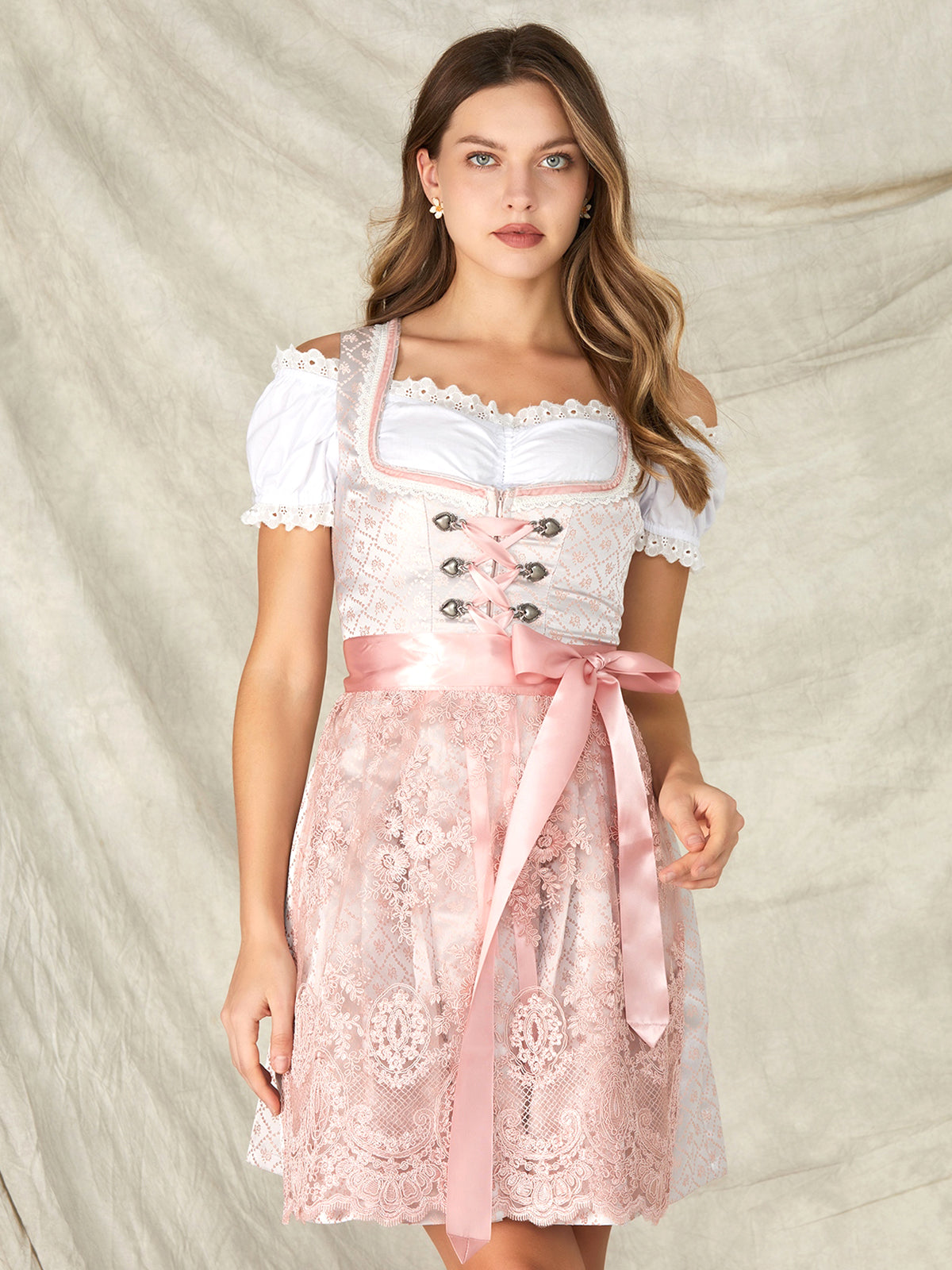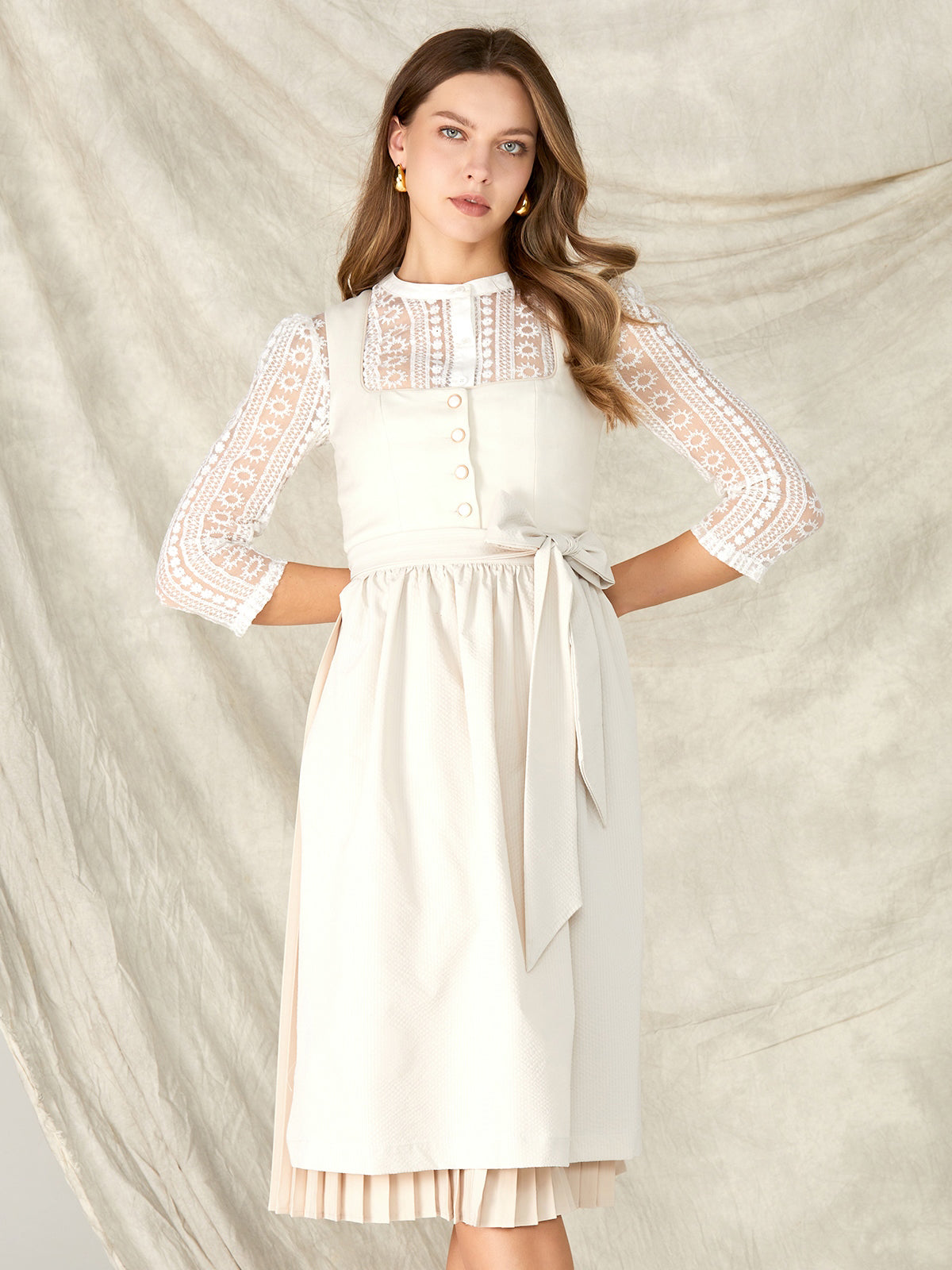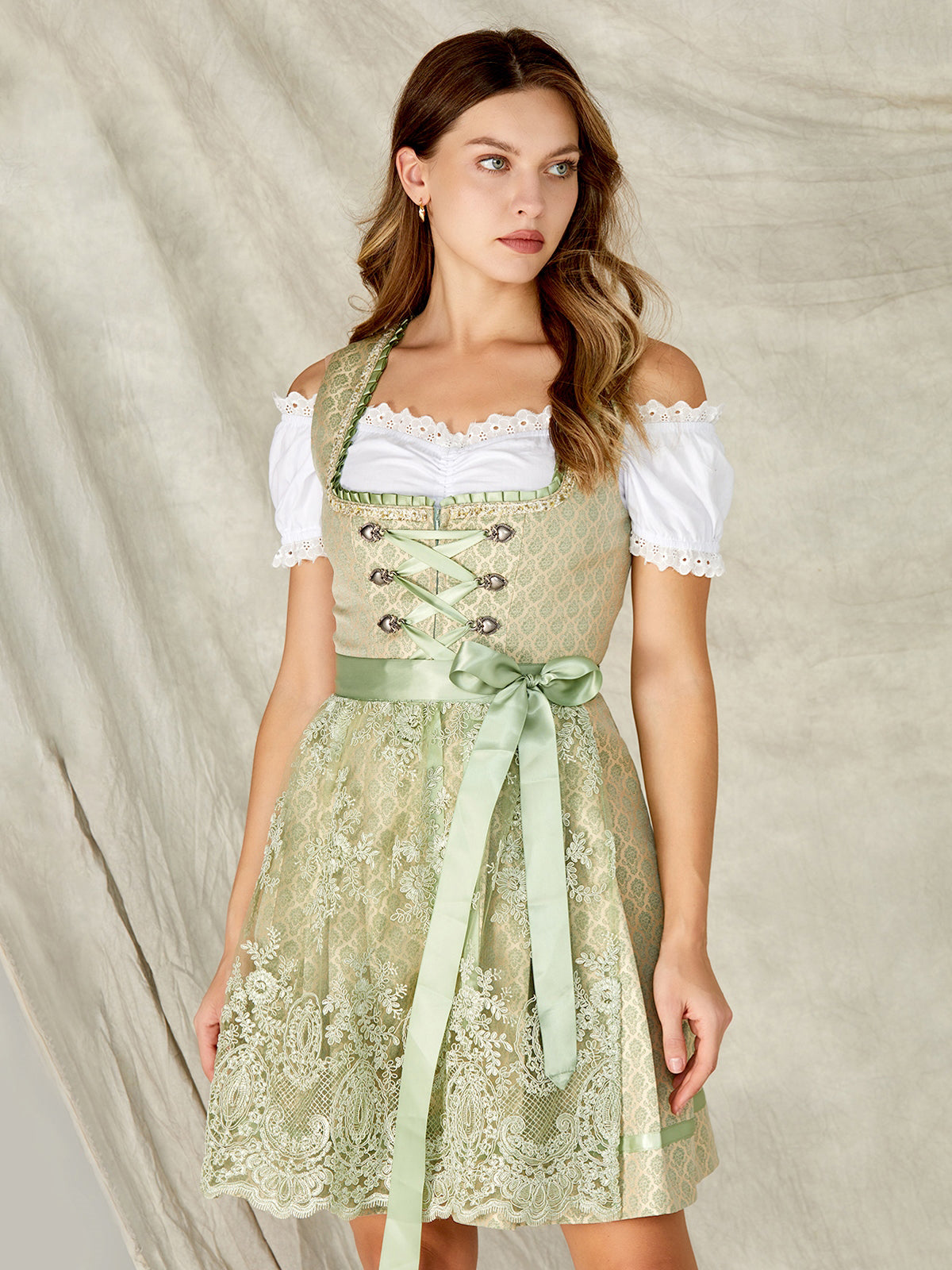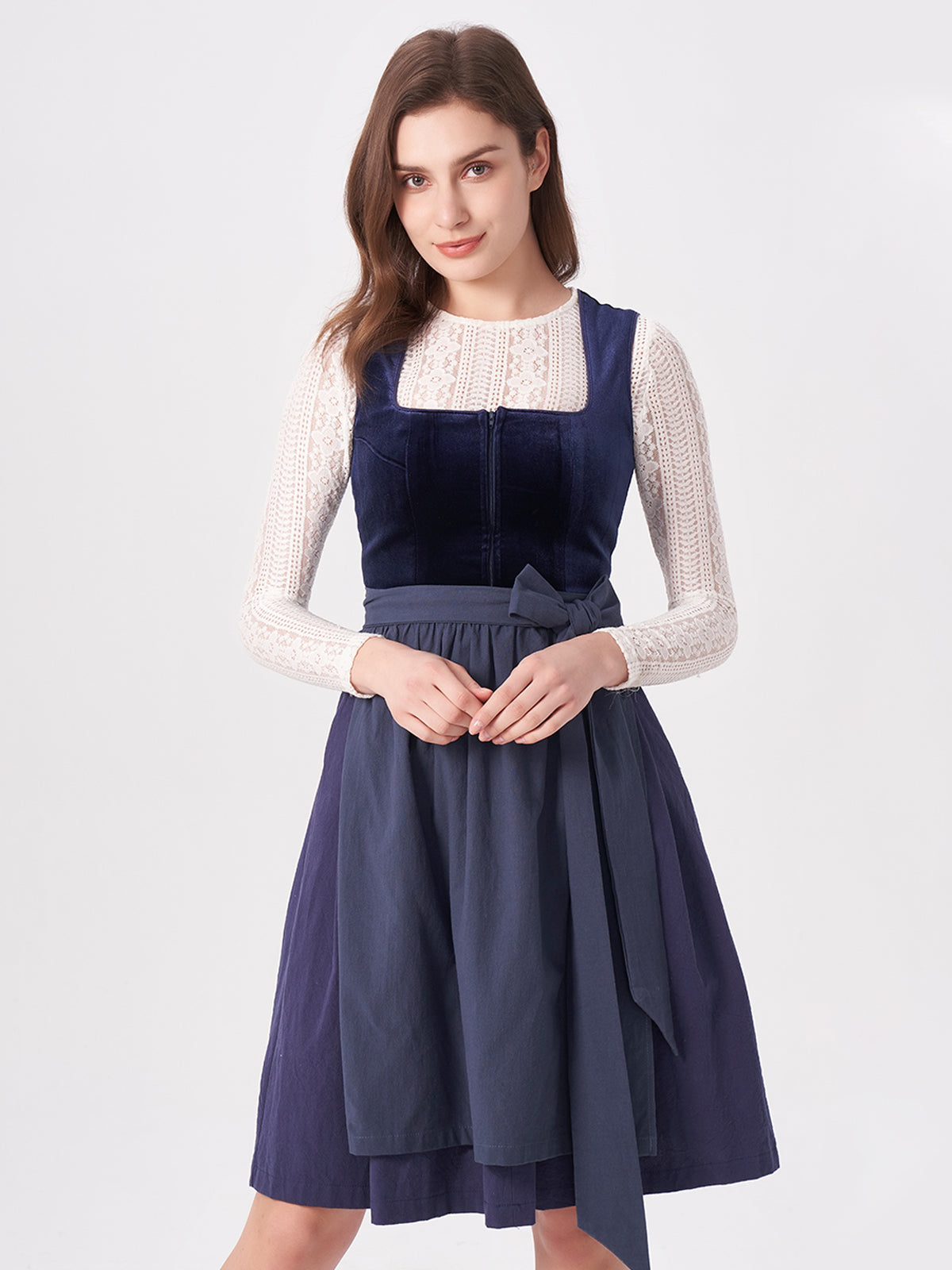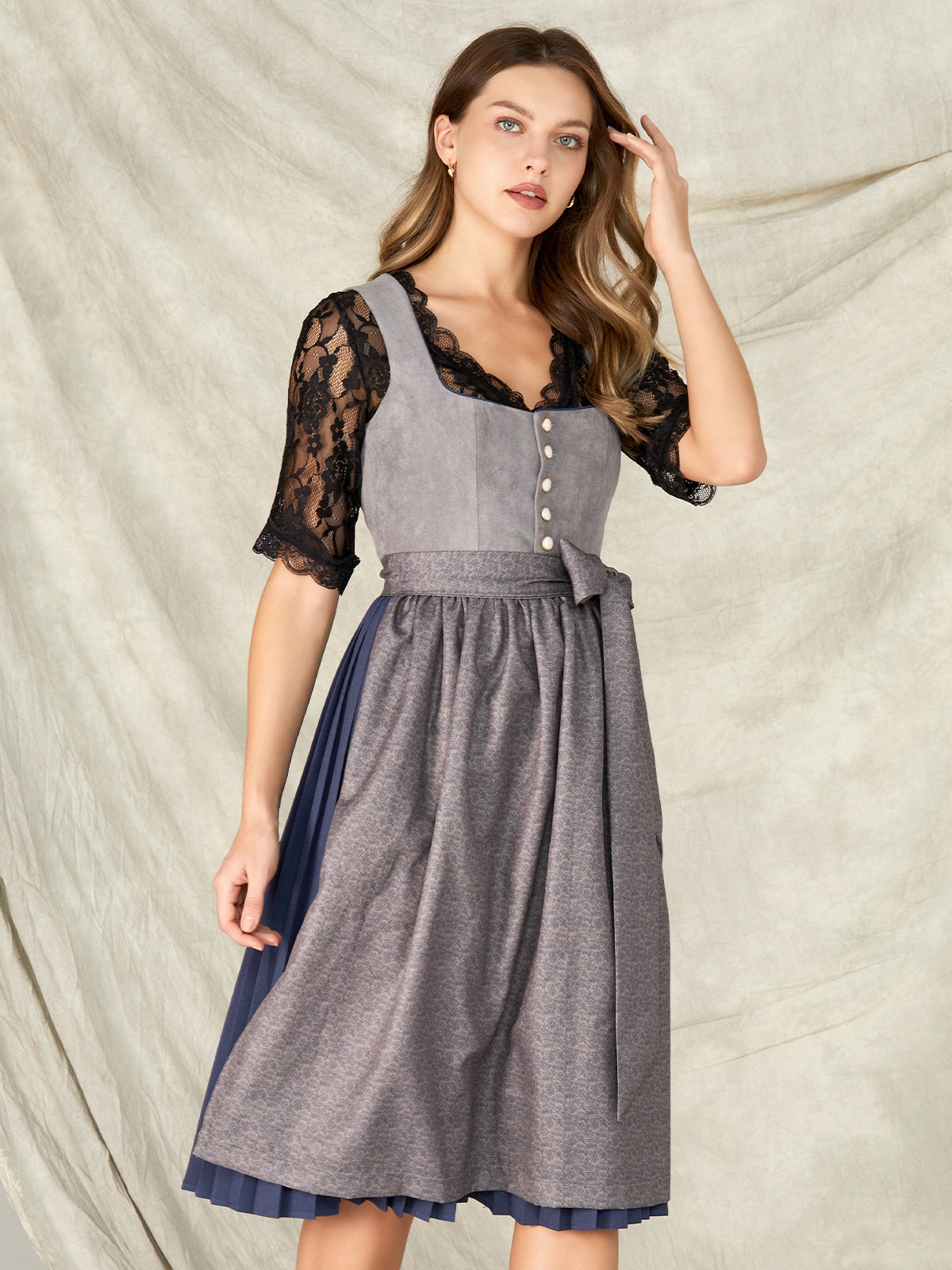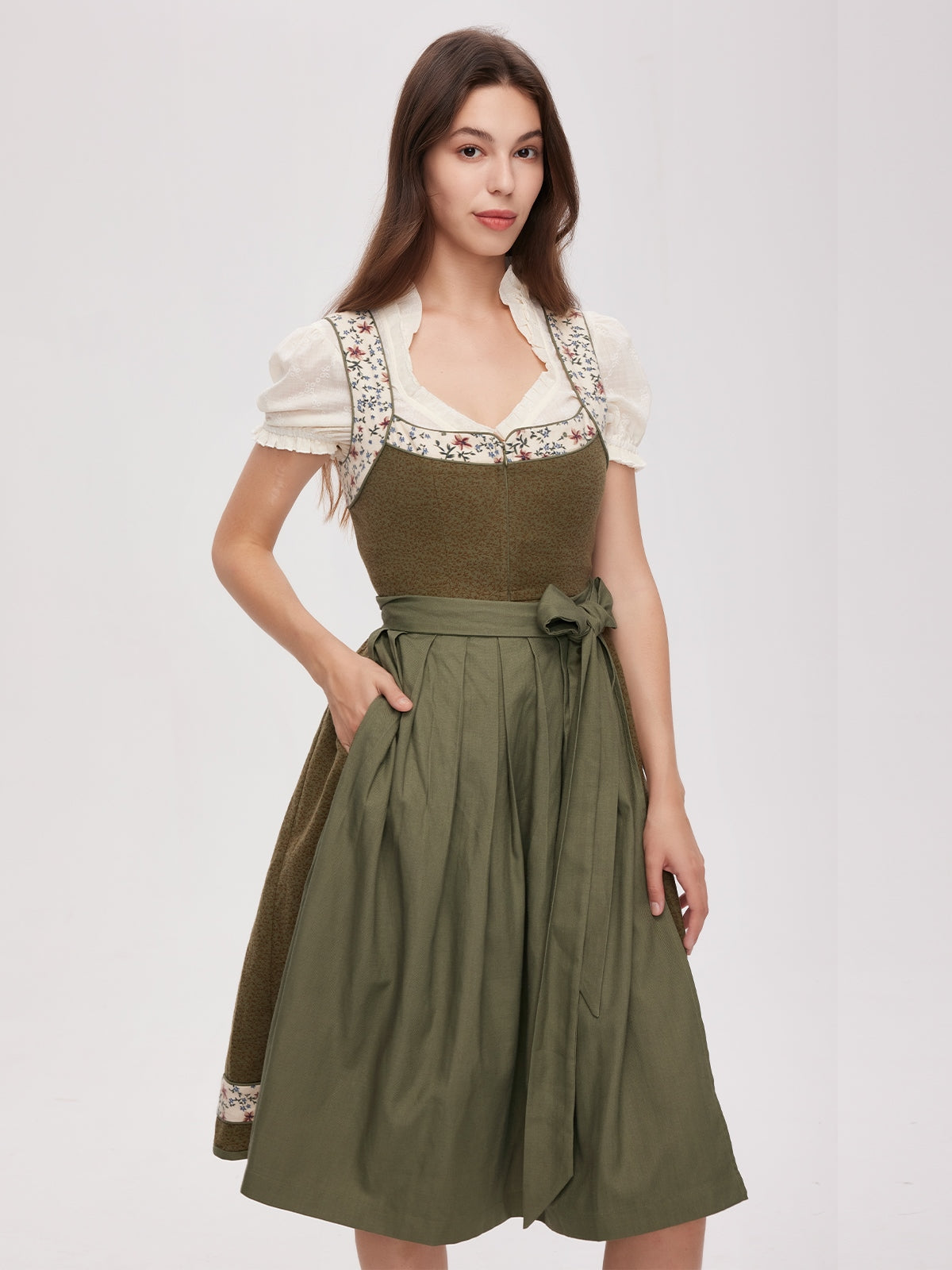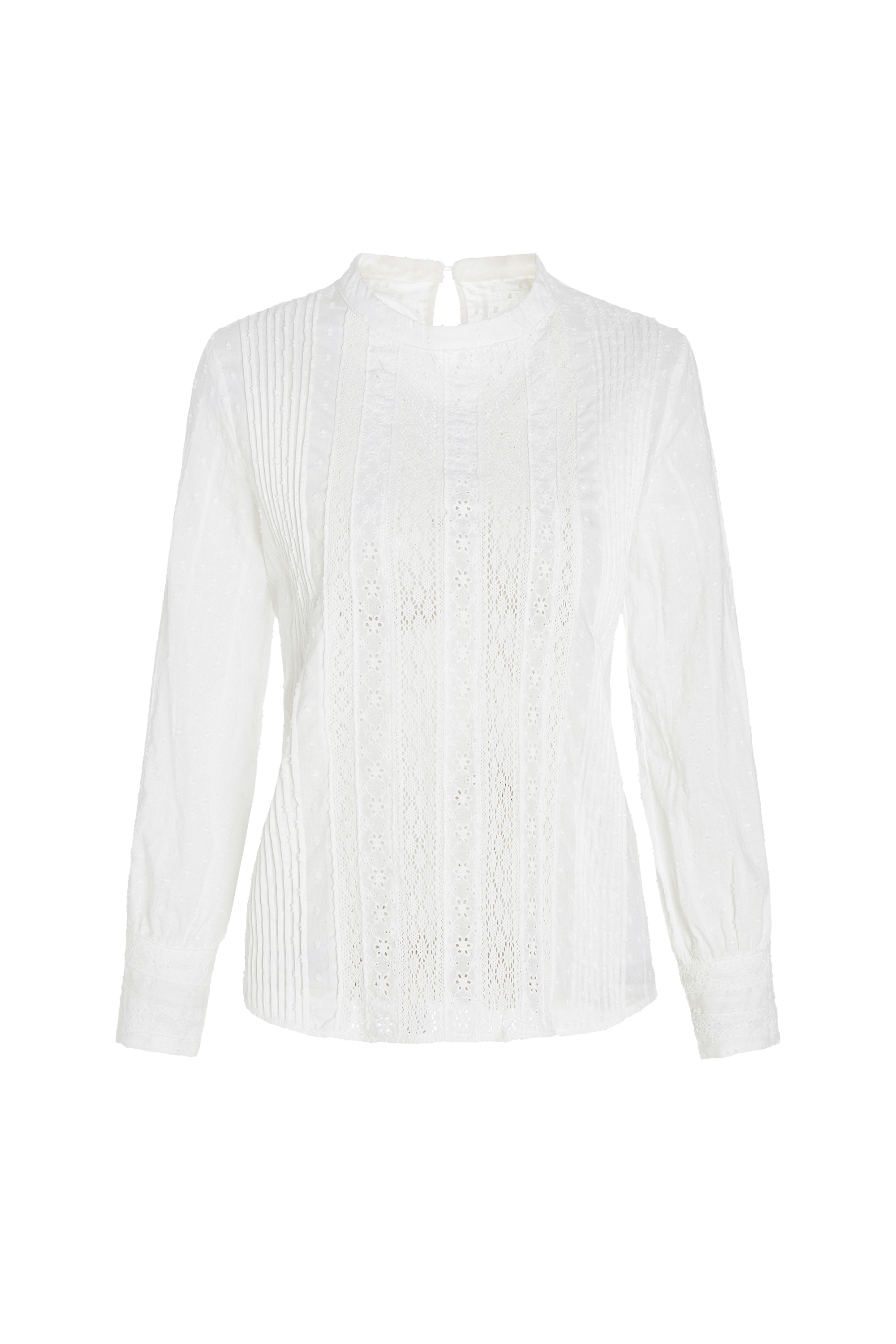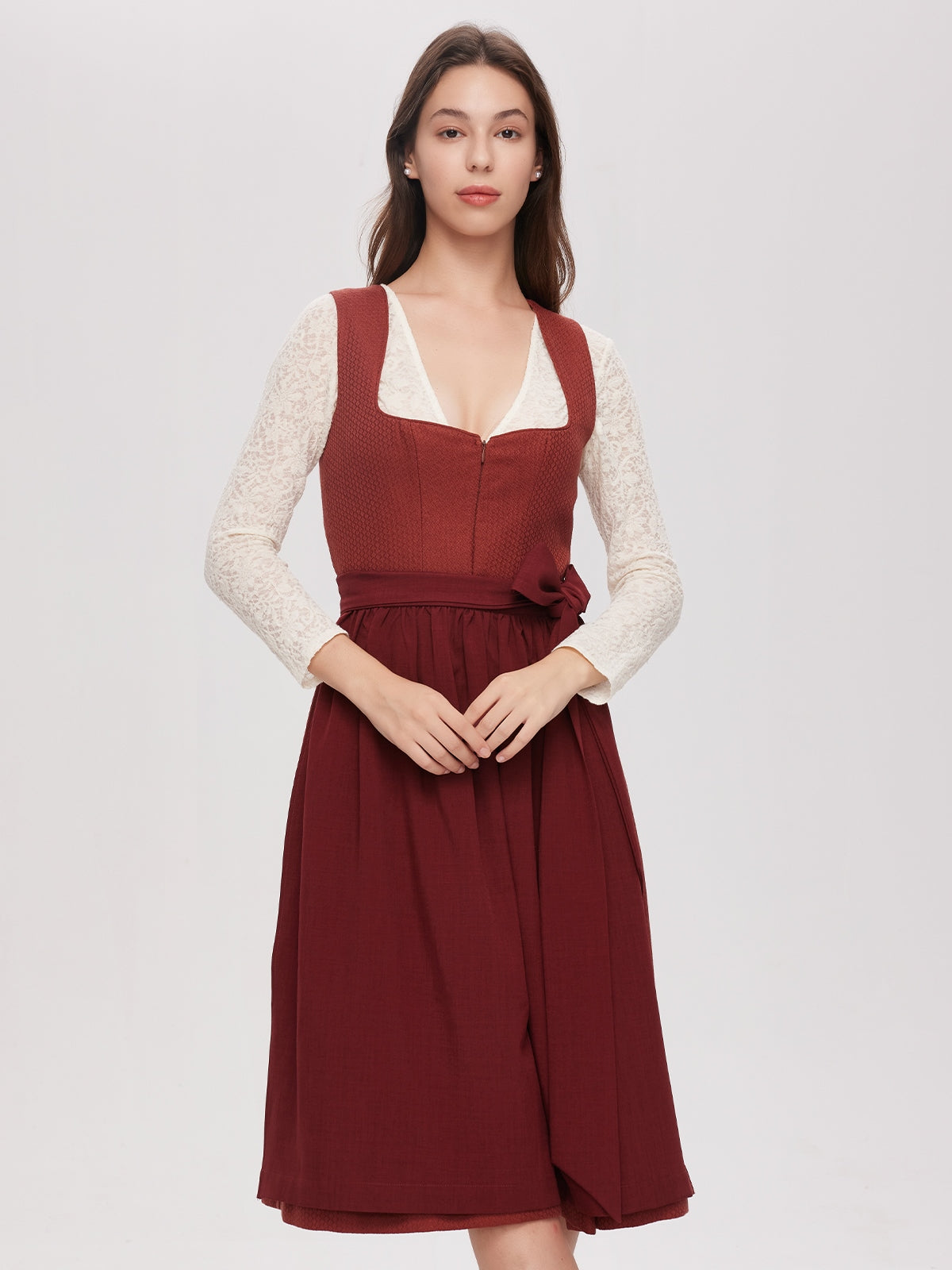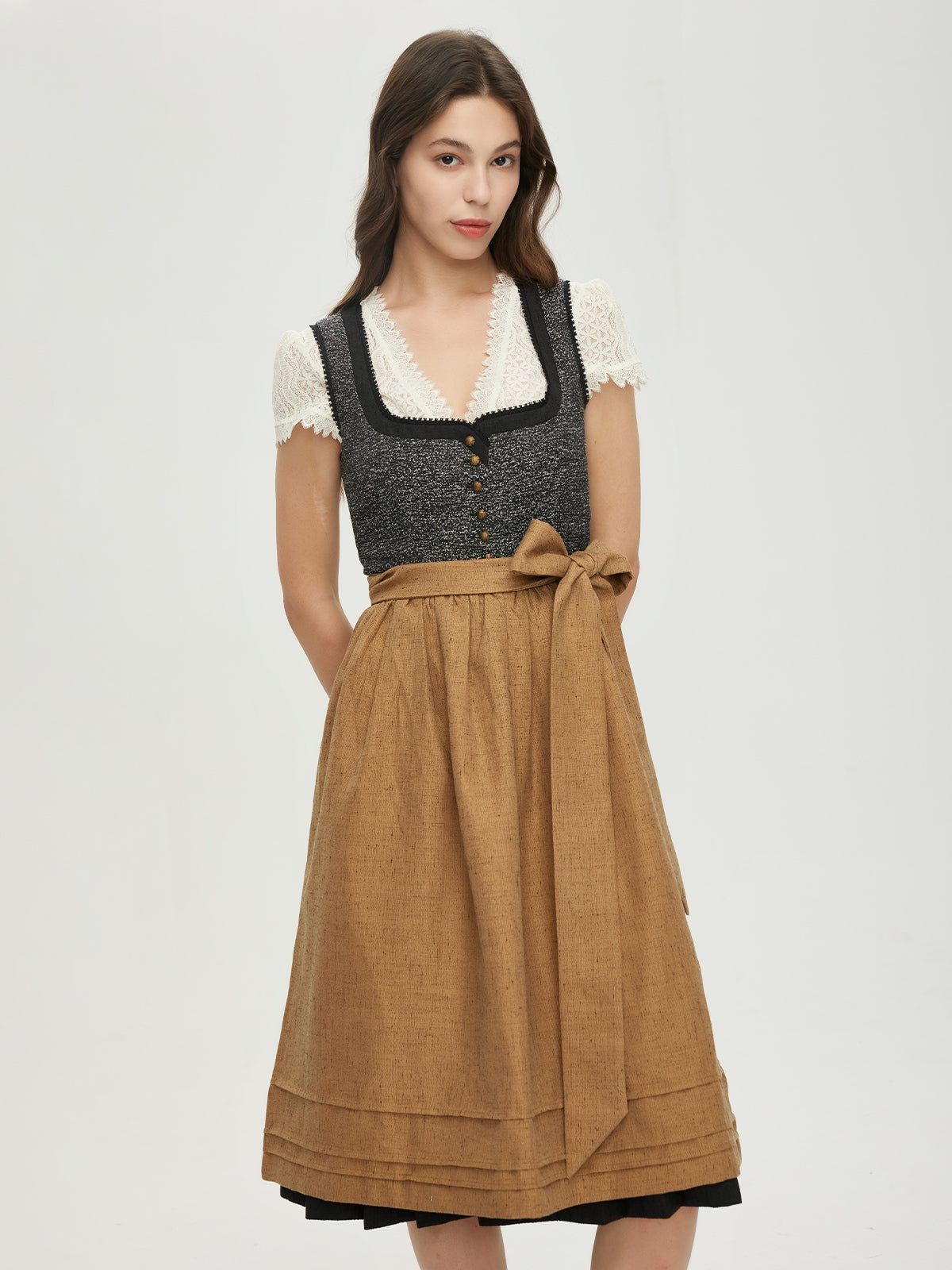Cart
0
The charm of the long-sleeved dirndl
The long-sleeved dirndl blouse combines the elegance of a traditional dirndl with the comfort and style of a long-sleeved blouse. The long sleeves add an extra touch of sophistication and warmth to the dress. This is especially beneficial on colder days or for occasions where you desire a more sleek and elegant appearance.
The blouse of the long-sleeved dirndl is often made from high-quality fabrics such as linen or soft cotton. This not only ensures a comfortable fit but also ensures the dress hangs naturally. The seams and details such as buttons or decorative ribbons are carefully crafted to ensure the quality and authentic look of the traditional dress.
This type of dirndl is perfect for a variety of occasions. It can be worn at a cozy family gathering, a wine tasting in a wine tavern, or even a cultural event. The long sleeves also pair well with accessories, such as a beautiful necklace or elegant gloves. Some models also feature pretty embroidery or appliqués on the blouse, further emphasizing the tradition and charm of the long-sleeved dirndl.
The dark blue with a dirndl - an elegance for special moments
The dark blue velvet dirndl is a true eye-catcher and exudes unparalleled elegance. The velvety fabric radiates a deep, rich dark blue color, immediately conveying a certain elegance and sophistication. Velvet is a material that has been valued for centuries for its durability and refined appearance, and when combined with the dirndl shape, it creates an exceptional traditional dress.
The fit of the dark blue velvet dirndl is carefully measured to emphasize the beauty of the female figure. The flounces and hem of the dirndl are often decorated with fine embellishments, such as delicate thread or pearls. This adds an extra touch of glamour to the dress and makes it a perfect outfit for special occasions such as weddings, galas, or the ceremonial opening of a new restaurant.
In addition to its outward beauty, the dark blue velvet dirndl also has a certain symbolism. Dark blue traditionally stands for seriousness, loyalty, and elegance. Wearing such a dirndl not only demonstrates respect for tradition but also a distinctive sense of style. The comfort of the velvety fabric is also remarkable. Despite its elegant appearance, it is soft and pleasant against the skin, ensuring a comfortable fit all day long.
Oktoberfest outfits without dirndls - alternative ways to experience the festive feeling
Although the dirndl is arguably the most recognizable symbol of Oktoberfest, there are many other options for dressing for the famous Munich folk festival. Oktoberfest outfits without a dirndl offer a way to share in the festive spirit without being tied to the classic dirndl.
A popular alternative is a pair of lederhosen or jeans and a colorful blouse. Lederhosen are a typical traditional costume for men, but women can also wear them in a modified version. Combined with a colorful blouse and some traditional accessories like a hat or a beer stein figurine on a belt, you can create an authentic Oktoberfest outfit. Jeans are also a good choice because they are comfortable and flexible. You can combine them with a blouse in typical Oktoberfest colors like red, blue, or green for a casual yet festive look.
Another option is dresses or skirts in traditional patterns, such as plaid or floral. Combined with a blouse or shirt and boots, these can create a great Oktoberfest outfit. The patterns and colors are reminiscent of the rural tradition and thus contribute to the festival atmosphere. Accessories such as hats, patterned socks, and jewelry in the form of beer mug pendants or gemstones in the colors of the traditional costume also help complete the outfit.
The story behind the costumes and their meaning
To understand the deep roots of traditional costumes like the long-sleeved dirndl, the dark blue dirndl with a velvet skirt , and even alternative Oktoberfest outfits, one must look back into history. These traditional costumes originally originated as workwear for farmers and craftsmen. They were practical and protective, but also an expression of belonging to a particular region or community.
The dirndl, in its original form, was the workwear of peasant women. Over time, however, it has evolved into a symbol of German culture and tradition. The various colors and patterns of dirndls signaled affiliation with a particular community or family. The development of traditional costumes was also influenced by industrialization and changes in society. New fabrics and techniques emerged that made the production of traditional costumes both easier and of better quality.
Alternatives to traditional costumes also have their own history. The use of lederhosen or jeans combined with colorful blouses dates back to changing lifestyles and fashion tastes. People still wanted to share the festive spirit of Oktoberfest, but also wanted to express their individual style preferences.
The production of the costumes
The creation of traditional costumes such as the long-sleeved dirndl, the dark blue dirndl with a velvet skirt, and even the alternative Oktoberfest outfits is an art form. Most costumes are made by hand, ensuring the quality and uniqueness of the products. The tailors and seamstresses use high-quality fabrics that are appropriate for each costume.
When making the long-sleeved dirndl blouse, special attention is paid to the fit and seam finish. The long sleeves must be comfortable and allow for free movement. Embellishments such as buttons and embroidery are carefully selected and applied to maintain the authentic look of the traditional dress.
The dark blue velvet dirndl is also made with great care. The velvety fabric must be carefully treated to maintain its smoothness and drape. Embellishments such as pearls or fine thread are applied by hand, which requires time and skill. The dirndl's fit is individually measured to emphasize the wearer's figure.
High-quality fabrics are also used in alternative Oktoberfest outfits, such as dirndls . Lederhosen are made from genuine leather to ensure authenticity. Blouses and dresses are crafted from colorful, high-quality fabrics. Manufacturers place great emphasis on the comfort and style of the outfits, ensuring that people feel both beautiful and comfortable.
The selection of traditional costumes
If you're looking for a traditional dress, such as a long-sleeved dirndl with a blouse, a dark blue dirndl with a skirt, or an alternative Oktoberfest outfit, there are a variety of options. You can find a wide selection of traditional costumes in local traditional clothing stores.
It's important to find the right size. A traditional dress that's too small or too large can negatively impact the look and comfort. Store staff can help you determine the right size. The choice of design and color should also be tailored to your preferences and the occasion.
In addition to the traditional dress itself, there are also accessories such as hats, shoes, socks, and jewelry that perfectly complement the costume. A pretty traditional hat or a pair of traditional boots can further refine the look of the traditional dress. The choice of underwear also plays a role in enhancing the comfort and appearance of the traditional dress.
Tips for wearing traditional costumes
When wearing a traditional dress, such as a long-sleeved dirndl, a dark blue dirndl with a blouse, or an alternative Oktoberfest outfit, there are a few tips to keep in mind. First, make sure the dress is clean and well-groomed. A dirty or wrinkled dress doesn't look as good.
When wearing a traditional dress, you should also make sure your underwear fits. A matching bra and panties can enhance the look of the traditional dress. Your choice of hairstyle and makeup can also transform your overall look. Simple, natural makeup and a pretty hairstyle go perfectly with a traditional dress.

